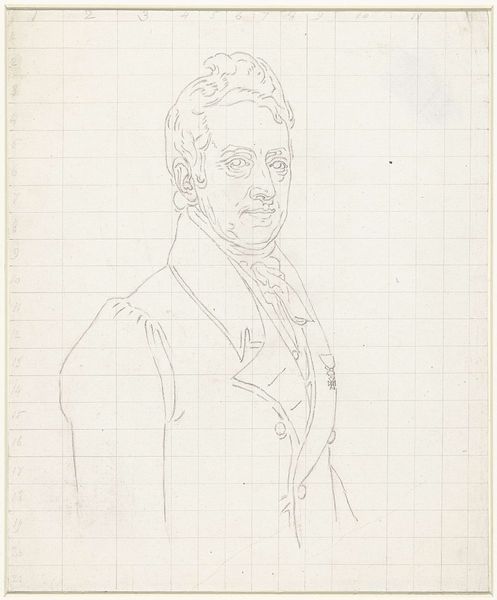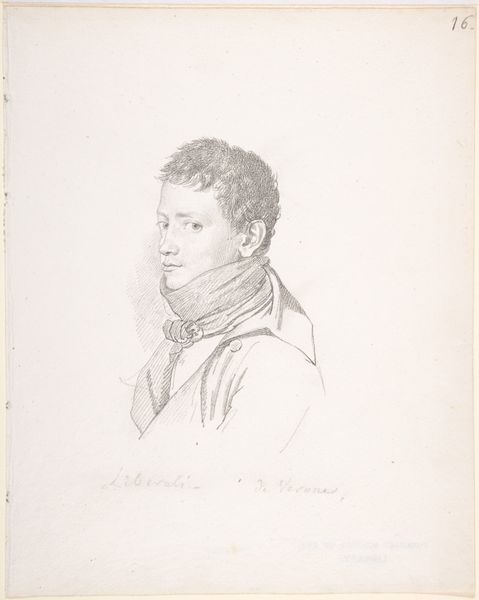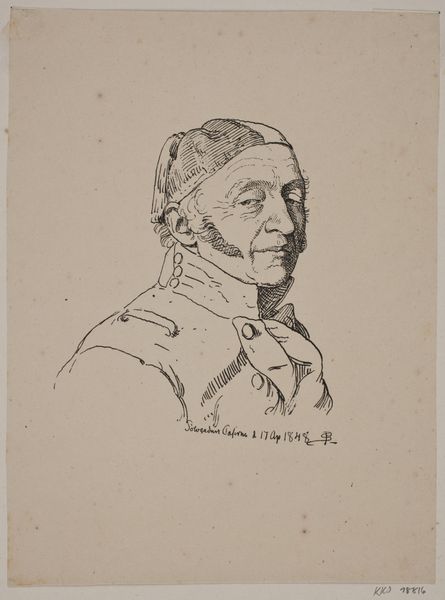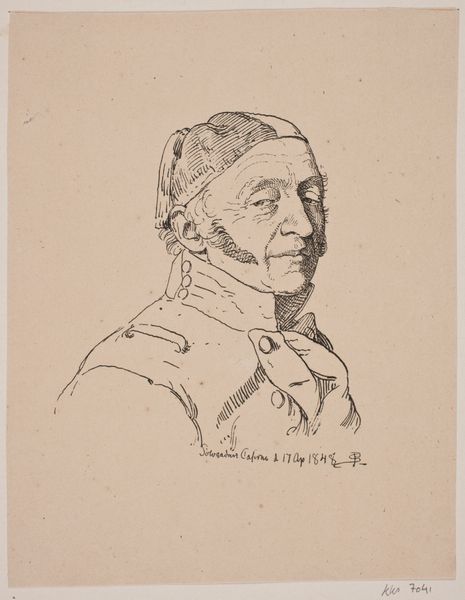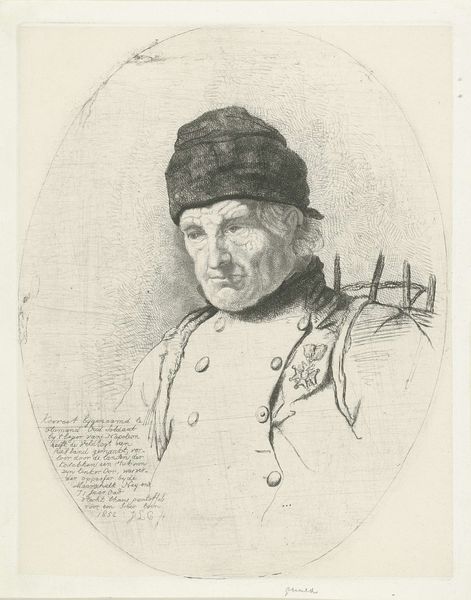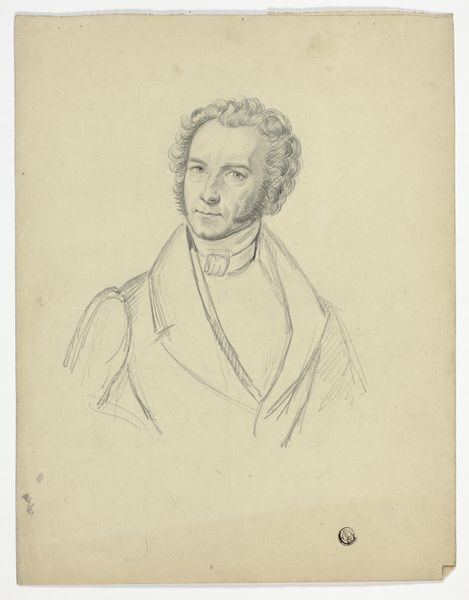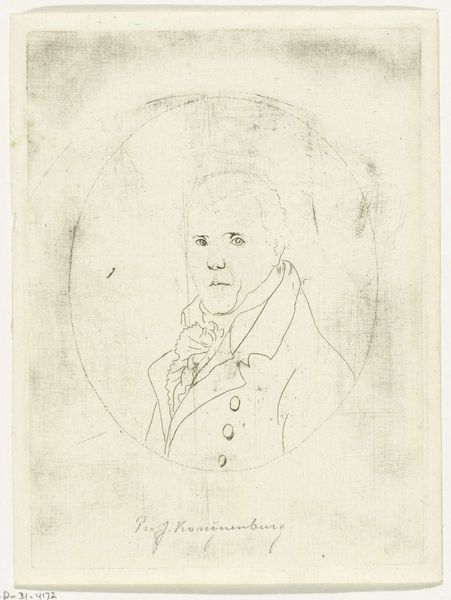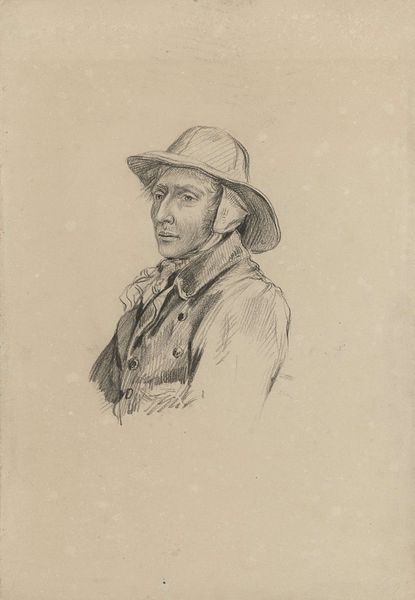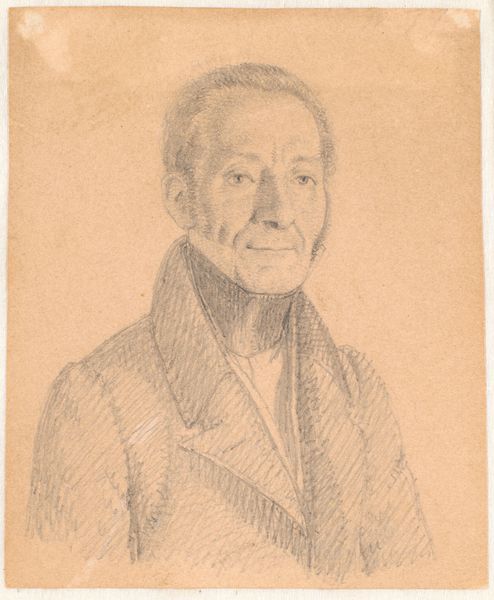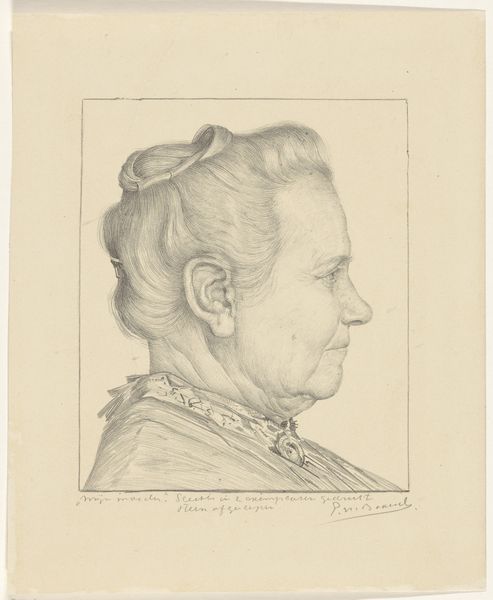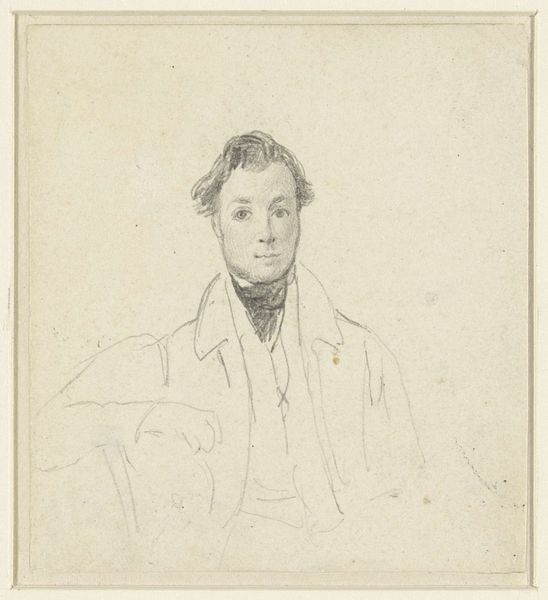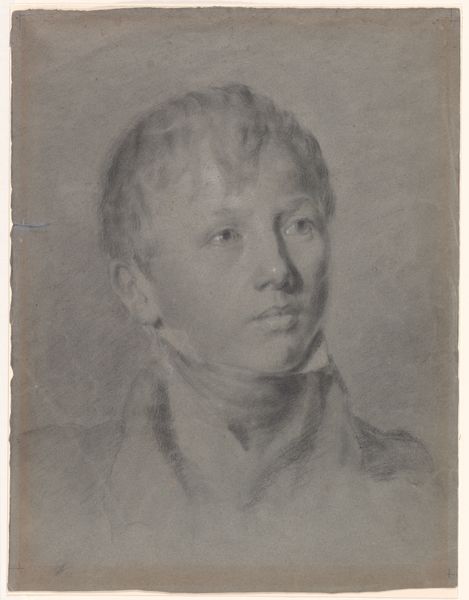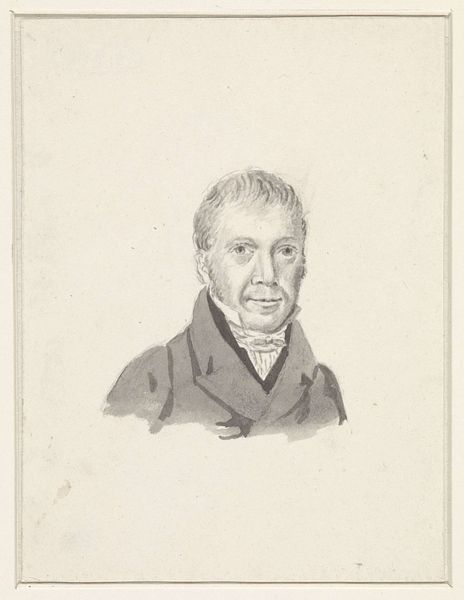
drawing, pencil
#
portrait
#
drawing
#
neoclacissism
#
figuration
#
pencil drawing
#
pencil
#
line
#
portrait drawing
#
history-painting
#
academic-art
Dimensions: height 465 mm, width 403 mm
Copyright: Rijks Museum: Open Domain
Curator: Here we have Willem Bartel van der Kooi's "Portret van Willem I," a pencil drawing created between 1778 and 1836. Editor: My immediate impression is of something unfinished, almost tentative. The gridded background peeks through, suggesting a study or a preliminary sketch. There's a vulnerability in the linework. Curator: The presence of the grid certainly speaks to academic art practices, a method of carefully scaling up a preparatory sketch. In the broader context of history-painting of this period, meticulous preliminary studies such as this pencil drawing, are key to art production in the academic style. Editor: Absolutely. Knowing that this depicts Willem I adds layers. We're looking at the image of power and authority represented not in its final, glorious state, but in an earlier phase of careful construction. Consider the socio-political environment in the Netherlands during this period. How much does this unfinished quality reflect a period of uncertainty or transition? Curator: A fascinating question. The artist certainly portrays Willem I with all the traditional signifiers of power: his garments and insignia are painstakingly detailed despite the unfinished nature of the work. His image was crafted in the visual language that borrows its codes from Neo-classicism which had roots in civic virtue, sacrifice and idealized beauty, that further empowered political authority in this period. Editor: The medium itself speaks volumes. Pencil lacks the permanence of paint, for instance. Does that choice hint at the fleeting nature of power or at least an approachability the subject wants to convey? This rendering feels less about solidifying a fixed image and more about sketching possibilities. There’s something very compelling and inherently democratic about its unfinished and understated presentation. Curator: The choice of medium makes the artwork more reproducible, disseminating this image of power further afield than if it was in other materials. Editor: Agreed, and it does encourage further conversation about its legacy and ours today. Thank you for drawing out further thoughts on this one. Curator: My pleasure, seeing the social impact through this particular sketch allows for greater contextual appreciation.
Comments
No comments
Be the first to comment and join the conversation on the ultimate creative platform.
